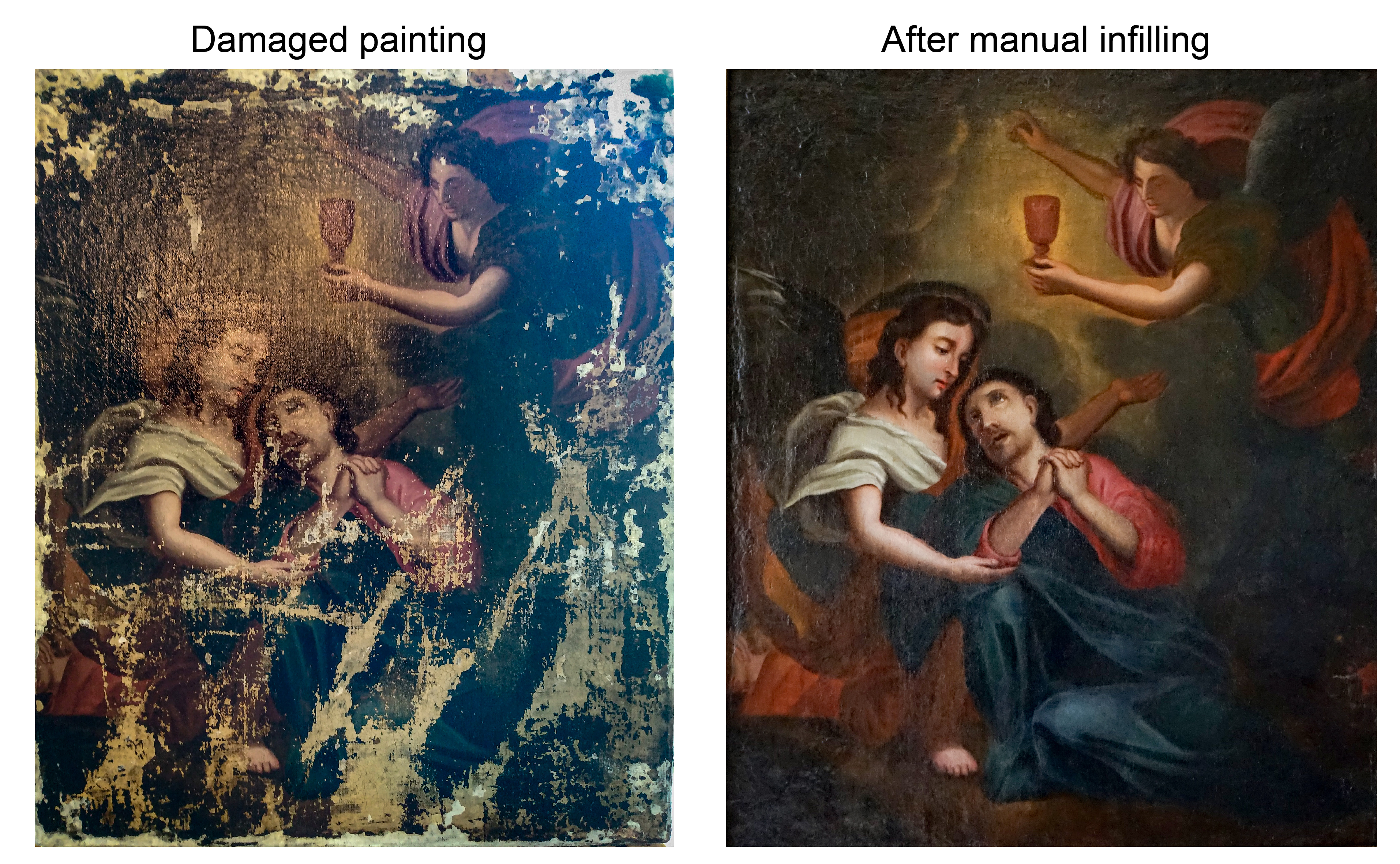Media release
From:
Engineering: Masking the damage to oil paintings
A method to restore oil paintings using a digitally created laminate mask is reported in a paper published in Nature. The method, which is demonstrated by restoring a highly damaged oil on wood painting from the late 15th century, might offer quicker restoration for some paintings compared with current processes.
Current restoration practices for paintings often take months, combining damage analysis, stabilization, cleaning and then the infilling (retouching) of the damaged parts of the image. The increasing number of paintings in museum collections can mean that some damaged paintings of a lower pedigree are not prioritized for repair. Digital image reconstruction has been used as a tool to visualize the results of any repairs to aid conservators, but currently there is no way of applying this reconstruction beyond conventional repair pathways.
Alex Kachkine reports a method for oil painting restoration using a digitally created laminate mask. The first stage of the process requires a digital reconstruction of the damaged image to be created to highlight the repairs needed, which are then used to map an infilling mask. This mask is then printed using colour-accurate pigments onto laminate, which is applied directly onto the surface of the painting. The technique is demonstrated using a highly damaged oil on wood painting from the late 15th century. The mask for the painting covers an area of 66,205 mm2 using 57,314 unique colours, and the application process took approximately 3.5 hours, which Kachkine estimates is 66 times faster than conventional methods. The mask is also removable, ensuring that no potentially detrimental changes are made to the original work.
Kachkine notes that this method can currently be used only on varnished paintings with a smooth surface, as texture in the paint affects the application of the laminate. The author suggests that this method could lead to the development of new conservation techniques and help to bridge the gap between digital and physical restoration.
Multimedia





 International
International



